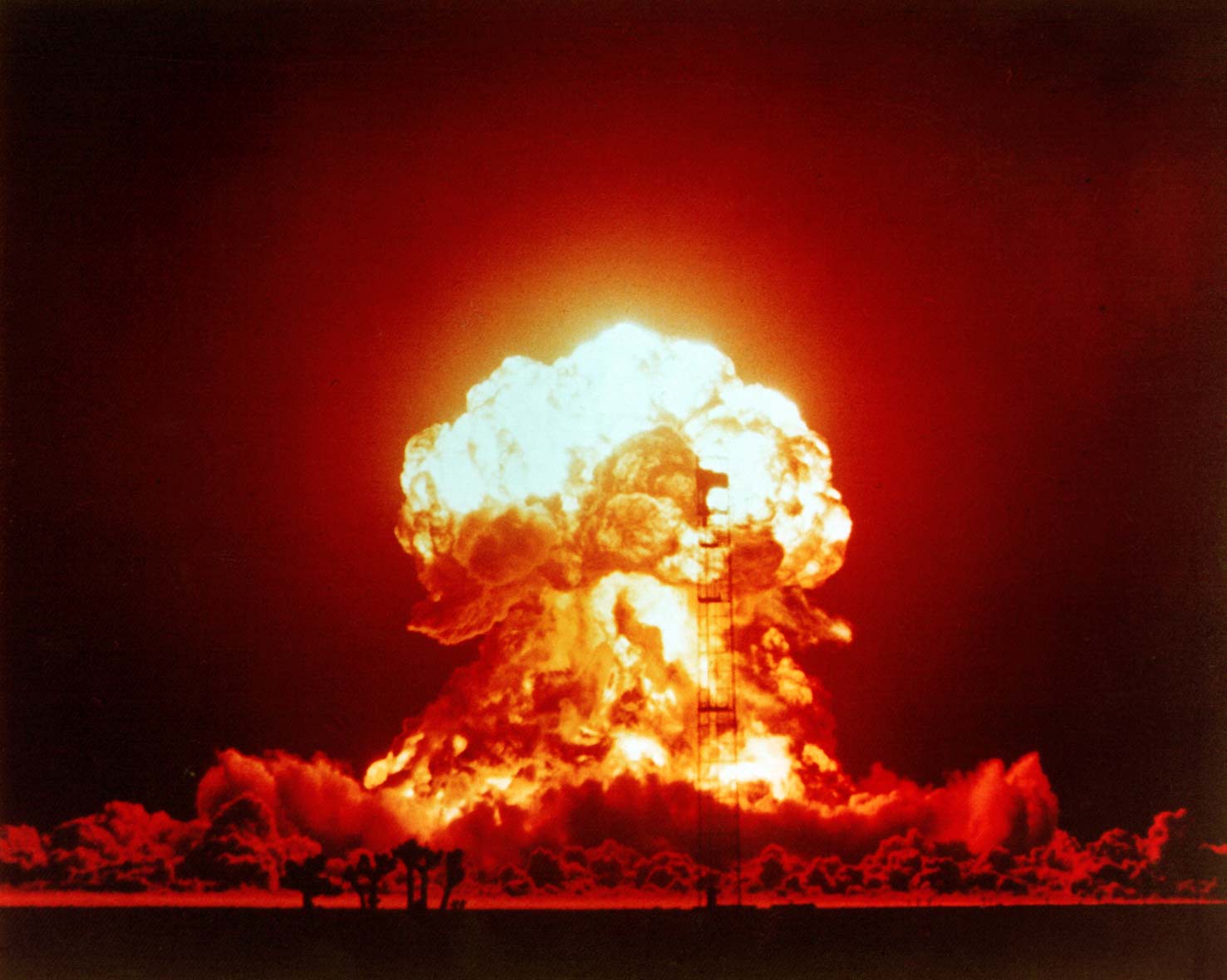It’s high time to declare nuclear weapons obsolete.
The U.N. Treaty on the Prohibition of Nuclear Weapons—entering into force January 22, 2021—underscores the most perilous environmental threat to humankind, a threat that cannot be ignored by the Biden administration.
Eighty-six nations, not including the United States and other nuclear weapons states, have signed the treaty that provides a diplomatic groundwork toward banning possession and use of these weapons. Yet militarily, the United States is moving rapidly in the opposite direction.
Biden inherits the Trump administration’s 2018 Nuclear Posture Review (see Robert Alvarez in The Washington Spectator), which showcases a costly, across-the-board nuclear weapons modernization highlighted by a perilous war-fighting capability. This destabilizing strategy, explicitly laid out in the NPR, once more raises the life-or-death issues of the utility of nuclear weapons and the horrific dangers that the United States risks in concentrating its defense around the nuclear deterrence option.
The modernization package, with a price tag estimated by the Congressional Budget Office of at least $1.2 trillion over 30 years, seeks extensive upgrades to the lethal triad of ground-based, submarine-based, and bomber-based systems. This entire conceptual house of cards rests on the specious assumption that if deterrence fails, the United States will be able to achieve its political objectives (read “fight a nuclear war”).
In addition, the NPR proposes deployment of new tactical (dubbed “nonstrategic”) nuclear weapons whose deterrent rationale is shaky and whose war-fighting capabilities make them inherently destabilizing.
The proposed nuclear buildup offers a critical opportunity for the Biden administration to rethink national defense policy and cure this nuclear addiction. The extension of the New START Treaty simply maintains a ceiling on U.S. and Russian arsenals.
This paradigm shift cannot be achieved overnight. Both President Reagan at Reykjavik in 1986 and President Obama at Prague in 2009 emphasized that the goal of nuclear arms negotiations should be the elimination of all nuclear weapons, but both admitted that this was a distant goal.
However, the reality today is that existing U.S. strategic nuclear weapons systems provide sufficient deterrence well past the year 2040. The last OHIO-class ballistic missile submarine is scheduled to retire in 2042. The Minuteman III intercontinental ballistic missile can be extended past 2030, while the B-52H bomber, armed with cruise missiles, can be deployed into the 2040s. While the safety and security of these systems should be maintained, the modernization program is mindless and destabilizing.
In its place, the United States now has the option of adopting a declarative policy of nuclear weapons obsolescence. As weapons reach operational obsolescence, they can be taken out of the inventory, dismantled, and destroyed. Concurrently, over the next 20 years, the United States can invite Russia, China, and other nuclear weapons states to negotiate on a modernization freeze and build-down that can be effectively verified and enforced.
The flip side of the coin is that, if this process does not achieve comparable reductions in nuclear forces by these other states over a specified period of years, the United States will reluctantly take steps once more to assure a sufficient nuclear force.
Such a wholesale transformation of strategic thinking will attract critics. Much like their Cold War predecessors who inflated Soviet aggressive intentions, NPR apologists emphasize emerging Russian and Chinese menaces and their own nuclear modernization programs, but it is unimaginable that Vladimir Putin or Xi Jinping would risk annihilation of their homeland and destruction of their regime by engaging in nuclear saber-rattling. Even Kim Jong Un has an existential appreciation of the present U.S. nuclear force.
Yet nuclear weapons did not deter the 9/11 attacks or the anthrax attacks on the U.S. Capitol. Any contention that the U.S. nuclear weapons arsenal prevents proliferation and terrorism is a fallacious argument with no empirical grounding. The extended nuclear deterrence theory only operated in a bipolar, Cold War environment, yet following the near-disaster of the Cuban missile crisis, the value of nuclear weapons coercion by the United States has been more than offset by the inherent risks.
The United States can move away from the NPR’s “other-directed” nuclear planning fixation, where we strive to match our potential adversaries system by system. At this point, Americans should cease obsessing over the Cold War riddle of “How much is enough?” and affirm, “Enough is enough.” Mutual assured destruction no longer has rhyme or reason.
The NPR states that “if deterrence fails, the United States will strive to end any conflict at the lowest level of damage possible.” This commitment to postnuclear damage limitation is absurd. Keeping a nuclear conflict limited to the lowest possible level flies in the face of military history. To paraphrase Talleyrand, “You can do anything you like with nuclear weapons except fight a war with them.”
Dr. Robert Rudney is a retired senior adviser in the Department of the Air Force. He was also chief consultant to the ABA Task Force on the Nonproliferation of Weapons of Mass Destruction and a fellow in Senator Bernie Sanders’s office, working on defense issues. As a strategic analyst at the National Institute for Public Policy (1988–1999), he authored studies on the deterrence value of the multi-warhead MX Peacekeeper intercontinental ballistic missile and other nuclear weapons systems.




0 Comments